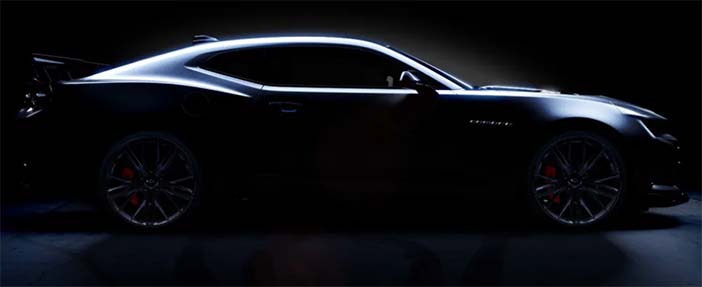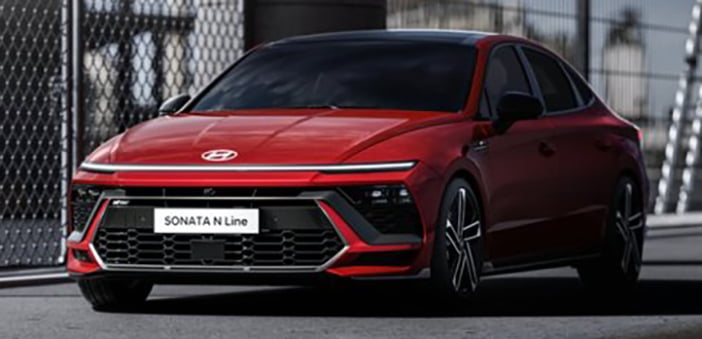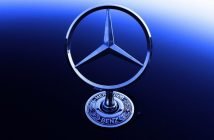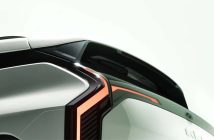+++ Giving a car model a name used to be something of an art form. But for some time at AUDI , the name of the game has been to number its models following a letter. And now, the jumble is about to become more confusing. The Bavarian brand plans to give all models equipped with gas and diesel motors odd numbered “names” and label all-electric or “battery electric” vehicles with even numbers. Got that? In plain English, it means (probably) that the next-generation A3 (now gas) will become electric, and be called the A4; the A4 as we know it becomes the A5, and so on. Extrapolating as best we can, the current A5 Sportback and gas-powered A7 become…history. Unless those models sprout electric powertrains. In January, I reported that Mercedes-Benz was set to drop the EQ product brand for battery-electric cars as soon as the next generation of compact cars, set to be on the market from the end of 2024. It would be the result of a decision by chief executive Ola Källenius to focus the brand on electric cars only. And BMW is said to be considering a similar move. Naming a car is a tricky process. “You try to create a language and a name that taps into the psychology and sells the product”, Robert Pyrah, who was head of strategy at the London-based creative agency Brandwidth, told The New York Times in 2018. “There’s a whole set of strategic considerations that come in”, he said. “It’s thinking how the brand should be positioned in the marketplace, identify the car’s essence”. Some clients have specific goals: “They’ll say, ‘We have a new SUV, and we want the name to target 30-somethings with two children’ ”. There’s also the challenge of finding a name that’s still free to be trademarked. If a person on the brand’s marketing team, charged with approving the new name, is presented with suggestions “that are coinages, or made up, or futuristic,” Pyrah said, “they’re going to go, ‘Well, why can’t I have Explorer?’ ” David Placek, founder of Lexicon Branding, has named products like Sonos, Swiffer, the Subaru Outback and the Rogue. He believes a name should be “surprisingly familiar” and he’s no fan of alphanumeric names … as with those used by Audi. He calls that “alphabet soup. There’s no memorability, and they’re hard to process”. +++
+++ Production for the 6th generation CHEVROLET CAMARO will officially come to an end after the 2024 model year, General Motors has announced. Chevrolet is sending the Camaro out in style with a limited production “Collector’s Edition” for the 2024 model year, too. If you’re wondering about what comes next for the Camaro nameplate, there isn’t a complete answer available yet. The only thing Chevrolet is prepared to say today is that the “Camaro” name will continue to be used in racing series. Scott Bell, vice president of Global Chevrolet had more to add: “While we are not announcing an immediate successor today, rest assured, this is not the end of Camaro’s story”. What exactly that story continues as will need to wait, but the Camaro as it stands today won’t be seen on dealer lots after the 2024 model year is sold out. The end is coming even quicker than you might imagine from hearing “2024 model year” too. Chevrolet says the last Camaros will roll off the Lansing Grand River Assembly Plant in January 2024, signaling that the final year will be a short one. For comparison’s sake, 2023 model year Charger and Challenger production is slated to continue until December 31, 2023. Even though the Camaro is technically lasting 1 model year more, its production will end just a month after Dodge calls it quits on its muscle cars. As for the Collector’s Edition, Chevrolet isn’t releasing any more than some surface details about it today. It’ll be available as a package for RS, SS and ZL1 models for 2024. Plus, Chevrolet says to expect references back to the development of the first-gen Camaro, particularly as an homage to the program’s code name: Panther. Orders for the Collector’s Edition will begin in summer this year and Chevrolet says to expect a full breakdown of information then. Until then, the shadowy teaser photos at the top of this story will have to suffice as a preview. +++

+++ Standing up an EV business to rival category heavyweight Tesla is coming at a hefty price for storied automaker FORD , one it’s prepared to address with aggressive cost cuts. Ford revealed Thursday it lost $2.1 billion on an operating basis in its Model E (electric) division last year. The automaker guided to an operating loss of $3 billion for the division for 2023 as it invests in production and battery capacity. The business is expected to reach profitability in 2026. “Our cost structure is not competitive”, Ford CFO John Lawler said. “We know that we have about $7 billion to $8 billion that we could take out and improve our competitiveness, and you will see that start to take hold as we get through the rest of the year, into 2024, and beyond”. “This is about ‘refounding’ Ford”, Lawler said about the company’s cost cuts and operating structure. As Lawler pointed out, Ford could take out $7 billion in costs from its legacy auto business to help fuel its EV ambitions and bolster overall profit margins. Ford provided the information as part of a “teach-in” for analysts at the New York Stock Exchange as it pivots to an electrified future. The event is aimed to help Wall Street better understand the inner workings of Ford by breaking out the business into 3 new segments: Model E, Ford Blue (gas-powered vehicles) and Ford Pro (commercial vehicles and other services). Ford further reaffirmed its full-year adjusted operating profit guidance of $9 billion to $11 billion. Lawler said the outlook factors in recent economic turmoil spurred by the rolling banking crisis. Ford has announced it’s making progress on construction of its factory complex for its next-generation electric pickup truck, upfitting and associated batteries. The factory, called BlueOval City, is due to start production of vehicles in 2025. It’s located in West Tennessee and Ford estimates it will provide around 6.000 people and cost $5.6 billion. The first vehicle Ford announced for the plant is called Project T3, with the latter part being short for “Trust the Truck”; a motto from the development team. The company didn’t specify any other details about it besides being a new-generation truck. It should be using one of the company’s new EV platforms that has been known as TE1. It’s a full-size truck platform designed from the outset to be electric, rather than adapted for an existing truck like the current F-150 Lightning. The platform is expected to be used for the replacement Lightning, as well as the eventual electric Ford Expedition and Lincoln Navigator. Some reports have suggested it might also be used for another pickup truck different from the F-150 Lightning. It might be dramatically different in design and target market. So it’s possible the truck built at this Tennessee location could be either the next Lightning, or this reported mystery truck. Or perhaps the more unusual design actually is going to be used for the new Lightning. Backing up the report of radical looks is Jim Farley’s description: “PJ O’Rourke once described American pickups as ‘a back porch with an engine attached’. Well, this new truck is going to be like the Millennium Falcon … with a back porch attached”. The target production start of 2025 does line up with the expected launch of a second-generation Lightning, though. Plus, you can almost always justify manufacturing investments for the Ford F-150, historically part of the best-selling line of vehicles in America. Plus, Ford says the factory will be capable of building up to 500.000 vehicles a year. That’s a lot of vehicles, which would be ideal for supplying the huge demand for F-Series pickup trucks. In keeping with the ideals of electric vehicles, the factory will be carbon-neutral in operation. Various systems are in place to help with this such as geothermal heating. Ford is also aiming to avoid use of additional fresh water for operations by taking advantage of stormwater and reducing evaporation from cooling towers. +++
+++ HYUNDAI said Friday it has set up a branch in Thailand to gain a share in the local market dominated by Japanese carmakers. Hyundai has recently established Hyundai Mobility Thailand and will begin its operations on April 1, a company official said. The Thai branch will be in charge of Hyundai’s vehicle sales, marketing and after-sales services. It may consider building a local production facility depending on market demand, he said. The maker of Tucson and Santa Fe SUVs has shipped a small number of models, such as vans, to the Southeast Asian country due to high import tariffs and other reasons. Hyundai launched the multipurpose vehicle Stargazer at the Bangkok International Motor Show held from March 23-April 2 while planning to launch the compact Creta SUV in the second quarter. The company also displayed the all-electric Ioniq 5 and Ioniq 6 models in the motor show. In Southeast Asia, Hyundai also has branches in Indonesia and the Philippines. Today, Hyundai has unveiled the facelifted Sonata. A sleek design defines the facelifted version. +++

+++ After making a name for itself nearly a half-century ago, the JEEP CHEROKEE , which has endured off and on through a number of iterations, has been dropped from the lineup. But the name will live on. Sort of. What started life as a body-on-frame SUV in 1974 later morphed into the resilient XJ built from 1984 to 2001, when it was replaced by the Liberty (which was called Cherokee in overseas markets). The Cherokee XJ also lived on through licensed production in China through 2014, when Jeep reintroduced the Cherokee name back into its North American lineup as a midsize SUV. But the Cherokee by then had lost its luster. On March 1, Stellantis idled the Belvidere Assembly plant in Illinois, where the Cherokee was made. There were suggestions that the plant be shuttered permanently depending on future negotiations with the United Auto Workers. Cherokee watchers could divine the end coming 2 months ago, after Jeep product planners radically slimmed down the Cherokee lineup to only 2 and reduced engine choices to a naturally-aspirated inline-4 and a 270 hp turbo. If the Cherokee reemerges in some form, it will likely be in zero-emissions form, as Jeep has made it clear that it will build electrified variants of all Jeep brands by 2025. At any rate, the Cherokee’s legacy (and its name) live on the Grand Cherokee, a large, upscale SUV that was renewed with high-tech touches and a plug-in hybrid offering in 2022. The name in fact came under fire 2 years ago when the chief of the Cherokee Nation asked Jeep to stop using the tribe’s name on its vehicles. “I’m sure this comes from a place that is well-intended, but it does not honor us by having our name plastered on the side of a car”, Chuck Hoskin Jr., principal chief of the Cherokee Nation, said at the time. +++
+++ We’re barely a week beyond the debut of the production version of the 3-row KIA EV9 . An unexpected follow-up just took place in China, where Kia hosted an EV day that debuted the 2-row EV5 concept. If you’re a fan of the Ghost in the Shell looks of the EV9, the EV5 will tickle the same aesthetic receptors with a smaller electric baton. Kia’s not given us anything spec-wise to go on other than exterior images and renderings of the interior so we can’t make comparisons to anything on the market or in the pipeline, but if it helps, the EV5 sits on 21-inch wheels. All we have is the brief for Kia’s battery-electric push into China, the brand CEO saying, “Kia will enrich our customers’ lifestyles and enable them to pursue personal adventures by setting fresh standards for dynamic and efficient electric driving”. We will eventually learn how upright, square styling sets new standards for efficient electric driving. A look at the EV5’s conceptual interior is all the explanation needed for enriching lifestyles. The interior design serves a three-pronged mission statement of “Healing, Caring, and Re-Charging”. For that, both rows of captain’s chairs swivel, making the most of the wide side apertures created by rear suicide doors. The cargo floor can turn into a coffee table that supports an integrated Bluetooth speaker and, for those so inclined, a plant. The speaker and plant pot look like they were designed to be integrated into the interior. Embedded solar panels in the panoramic sunroof ensure all occupants, including the plant, get the right amounts of light, air, and climate control. Some suspect the EV5 could arrive in the U.S. as an electric equivalent of the Sportage, which is 8 inches shorter than the EV6 that the EV5 would slot under. Kia ended its press release about the coming crossover with, “The production model of the EV5 will be released first in the Chinese market later this year. Details regarding any future plans for the other global markets will be made in due course”. So now we wait. +++
+++ MERCEDES-BENZ is preparing to take on the Tesla Model 3 with an all-new third-generation CLA that offers the choice of in-house-developed electric and mild-hybrid petrol drivetrains. The new four-door coupé-style saloon is set to be previewed in concept car guise at the Munich motor show in September prior to a planned start to UK sales in early 2025. As part of recent moves to simplify the naming of the German marque’s models, the new Mercedes-Benz CLA is expected to retain its traditional name in both pure-electric and combustion-engined forms, rather than adopt the EQ sub-branding given to electric models today. It is among four new ‘Entry Luxury’ models pencilled in for launch by Mercedes-Benz over the next three years as part of a comprehensive restructuring of its compact car line-up under its ‘Electric First’ strategy. In a major shift in emphasis towards higher-positioned models, Mercedes-Benz says it will reduce the number of compact models from the seven it offers today to just four by the end of 2026. This move will result in the axing of the existing combustion-engined Mercedes-Benz A-Class hatchback, the standard-wheelbase A-Class saloon, the Chinese-built long-wheelbase A-Class saloon and the Mercedes-Benz B-Class. In the revamped compact car line-up, the new CLA saloon will be joined by successors to the CLA Shooting Brake, the GLA/EQA crossover and the GLB/EQB SUV. All 4 models are set to be produced in both electric and petrol guises at Mercedes-Benz’s factories in Rastatt, Germany, and Kecskemét, Hungary. Detailing Mercedes-Benz’s compact car plans, CEO Ola Källenius said: “We will focus on the models that we believe are the most successful on a worldwide basis”. Underpinning the upcoming models is the new Mercedes Modular Architecture (MMA) platform, as previewed by the wind-cheating Vision EQXX concept car. Unlike the MB-EA platform (which, Mercedes-Benz confirms, will exclusively support pure-electric models and is destined for production in 2025 as the basis for upcoming electric versions of the C-Class and GLC) the MMA platform is being engineered for both pure-electric and combustion-engined models. Explaining the dual role of the new platform, Källenius said: “It is electric first. But that doesn’t mean it is electric only”. Saloon-cum-coupé take on the A-Class gets the hardcore ‘45’ treatment, coming away with only subtle characteristic differences from the hatch. Key styling elements of the new CLA include a fresh grille set low in the front bumper along with angular headlights that are connected by a light band at the front. Another light band will also be placed across the bootlid. A longer wheelbase than that of today’s CLA is also claimed to provide improved access to both the front and rear of the cabin. When the new CLA arrives in 2025, it will be sold initially in electric form, with a mild-hybrid combustion option arriving six months later but only in selected markets. This indicates that AMG versions are also likely, although that has yet to be confirmed. In pure-electric form, the MMA supports an 800V architecture with charging at up to 350 kW. This allows a 10-80% battery charge within 30 minutes on a high-powered DC system, says Mercedes-Benz. The skateboard-style structure has been conceived around a new lithium iron phosphate (LFP) battery. It is based around a cell-to-pack production principle and is claimed to offer vastly improved efficiency over the lithium ion units used by the company today. Mercedes-Benz also plans to introduce a new silicon-anode battery developed in partnership with Sila in a long-range version of the new CLA saloon. Early testing is said to have yielded average energy consumption under 12 kWh per 100 km. +++
+++ PORSCHE will not join the 2026 Formula 1 grid as it (and no doubt many fans) had hoped. This decision will have no bearing on the manufacturer’s Formula E program, The Race reports. Volkswagen Group executive Herbert Diess originally confirmed last May that Porsche would return to Formula 1 alongside sister brand Audi, which is still on track to join the series for the first time. If Diess’s comments from last year hold true, it will likely be at least a decade before Porsche reconsiders the move. While Audi has made visible progress toward its first entry in the series, Porsche fans watched with increasing uncertainty last fall as efforts to partner with Red Bull stalled and eventually collapsed. Unlike Audi, which committed to building its own powertrain tech and may remain satisfied with just a minority stake in the F1 Sauber team, Porsche was reportedly looking to purchase a significant (likely controlling) interest. A new engine design is due for 2026, which would have given Porsche the chance to enter the series at the ground floor of a new powertrain era for F1; an opportunity that usually only presents itself about once a decade. Earlier this month, Porsche Motorsports VP Fritz Enzinger suggested that the manufacturer would be more interested if the series committed to the use of e-fuels, which have become part of Porsche’s carbon-neutral commitment. Reading between the lines, it appears Porsche will remain on the F1 sidelines for quite a while. Hey, at least we still get Audi. +++
+++ The Camry is a staple of TOYOTA ’s lineup in the U.S., and despite the turn away from sedans toward SUVs, it’s almost unthinkable that it would ever be killed off. That’s not the case in Japan, where the Camry will reportedly no longer be sold by the end of 2023. Toyota has already stopped most Japanese dealers from placing new orders for the Camry. The model will be phased out from Toyota’s Japanese lineup by year’s end. The paper also emphasizes that the Camry is still safe in overseas markets, including the U.S. The plug-pull would end 43 continuous years of the Camry nameplate in Toyota’s home country. The Camry was introduced in 1980 in Japan. However, it was never a top seller at home as it was here. Toyota sold 1.3 million Camrys in Japan during its 4 decades on the market. In comparison, American sales have totaled 13 million, tenfold. That’s largely because Toyota offered Japanese buyers many more compelling alternatives. The Camry was Toyota’s first front-wheel-drive model with a transversely mounted engine. However, in Japan customers could buy a Toyota Crown or, in later years, a Mark X sedan that was more or less the same size but, crucially, rear-wheel-drive. The third- and fourth-generation Camrys were arguably the best. That’s when the Camry began its climb to the top spot on America’s best-selling passenger car lists. It held that honor for 4 consecutive years, 1997-2000. However, those cars weren’t popular in Japan because they were tailored for the American market. Their wider dimensions put them in a more expensive category for road taxes, throttling sales. From 2001 onward, the Japanese Camrys were offered with 4-cylinder engines only. The V6 engines were reserved for the Toyota Windom, a platform twin we would recognize as a Lexus ES. From 2011 onward, the Japanese Camry was offered only as a hybrid, but that wasn’t enough to stand out in a marketplace flush with hybrids. Today the reason for the Camry’s demise is a bit more obvious. If you guessed SUVs, you’d be correct, according to the Nikkei. Its intra-family rival the Mark X was discontinued in 2019, and the Crown has morphed into a quasi-crossover lifted sedan. However, the Camry is still sold in over 100 countries and shows no signs of disappearing from those markets. For now. +++



